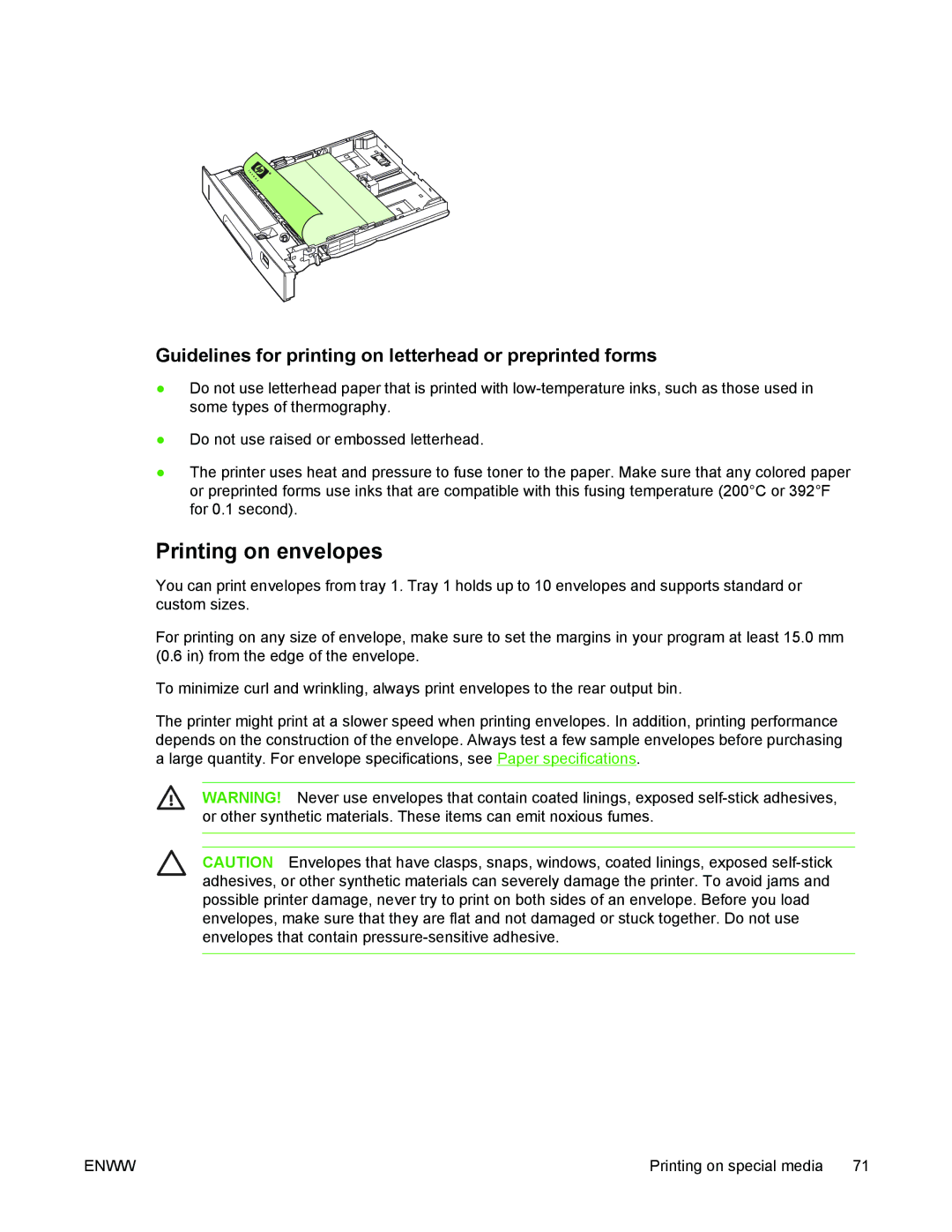
Guidelines for printing on letterhead or preprinted forms
●Do not use letterhead paper that is printed with
●Do not use raised or embossed letterhead.
●The printer uses heat and pressure to fuse toner to the paper. Make sure that any colored paper or preprinted forms use inks that are compatible with this fusing temperature (200°C or 392°F for 0.1 second).
Printing on envelopes
You can print envelopes from tray 1. Tray 1 holds up to 10 envelopes and supports standard or custom sizes.
For printing on any size of envelope, make sure to set the margins in your program at least 15.0 mm (0.6 in) from the edge of the envelope.
To minimize curl and wrinkling, always print envelopes to the rear output bin.
The printer might print at a slower speed when printing envelopes. In addition, printing performance depends on the construction of the envelope. Always test a few sample envelopes before purchasing a large quantity. For envelope specifications, see Paper specifications.
WARNING! Never use envelopes that contain coated linings, exposed
CAUTION Envelopes that have clasps, snaps, windows, coated linings, exposed
ENWW | Printing on special media 71 |
